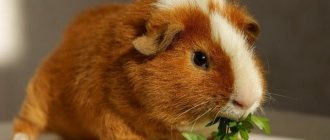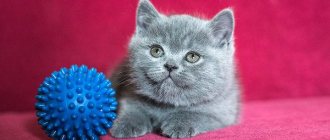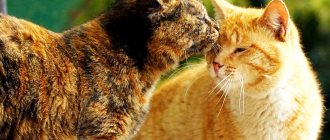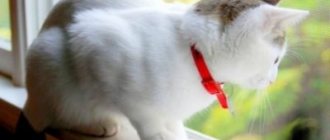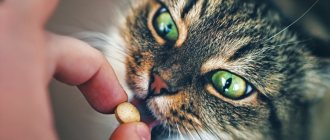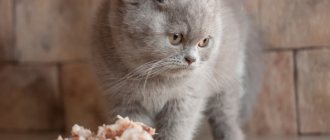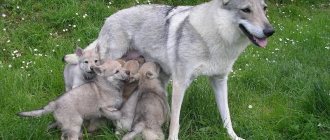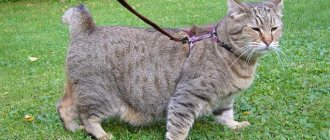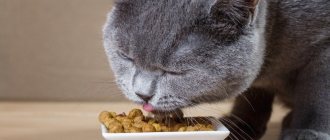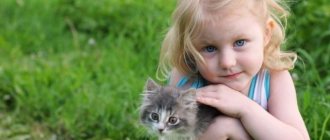Capybara character
Capybaras are noticeably different from other rodents: they are almost never in a hurry, they are difficult to anger, and they are also a little lazy. Not even a little: these animals never build holes and sleep right on the ground.
Look - Panda - habitat, lifestyle and reproductive characteristics. Types and description of the life cycle of a panda (95 photos)
By the way, capybaras sleep a little: they like to eat after sleep, so they often wake up and go in search of food.
Capybara at home
Keeping rodents at home depends on the laws of a particular country - in some it is illegal to keep them as pets, in others a license and permission from local regulatory authorities is required for breeding. When purchasing, be prepared for high maintenance costs, as well as the need to provide a social animal with decent company.
Necessary accessories
First of all, there must be a small body of water (for example, a swimming pool) next to the housing, at least four meters in size. The instinct of animals requires being in the water half the time, and in general the animal loves to swim and dive into water.
The absence of a reservoir will lead to illness, bad mood and a shortened lifespan of the rodent.
Despite its size, the animal moves very quickly and agilely. It is necessary to take care of high-quality fencing, otherwise sooner or later it will run away. At the same time, instinct requires a large territory - the site must have an extensive sunny and shady area.
What does the animal eat
The animal requires a lawn or a large field for food. In addition to grass, the diet should include fruits, vegetables, grains, and hay to maintain the balance of vitamins and minerals. In addition, the rodent must constantly grind its teeth by chewing a large number of sticks and branches.
Hygiene and care
The animal is extremely clean, does not like dirt and spends most of its time in water. They love affection and respond well to brushing and combing. In addition, an ordinary individual loves to run; there is no need to lock it in a cage or limit its movement to a small area.
For hygiene, you can use products for small dogs. Necessities include products for cleaning fur and its shine, swabs for cleaning eyes and ears, breath fresheners and special toothbrushes.
Thanks to their calm nature, the animals quickly get used to being walked on a leash, although in moments of danger they can bark loudly
The rodent itself is not dangerous: the main model of behavior is to escape; it can attack only if the cubs are threatened or when driven into a corner.
Breeding
The Catholic Church has recognized capybaras as an acceptable substitute for beef and pork during Lent, making the animal's meat especially popular in the 40-day period before Easter. To reduce poaching and the amount of spotted fever infection through contact with wild animals in most Latin American countries, animals are bred on special farms. Due to their character traits, rodents were quite easily domesticated.
The disadvantages are much lower returns compared to traditional breeding species (cows, pigs) and the possible transmission of diseases to other species.
In general, the animals have no significant value for breeding, and farms exist only because of the general inability of religious Latin America to eat the usual meat for a month and a half.
Capybaras and other animals
Capybara is an Internet star. She hugged everyone in the photographs: kittens, ducklings, and even managed to lie in the sun with a crocodile! Take a look at the photos of the animals: the capybara is not at all afraid of one of its natural enemies!
However, it is not only crocodiles that hunt the capybara. In water, rodents are hunted by caimans, and on land by anacondas and jaguars. However, capybaras hide from land enemies in the water, keeping only their nostrils on the surface.
Description and dimensions
The capybara has short limbs ending in partially webbed toes. The forelimbs are characterized by the presence of four fingers, while the hind limbs have three fingers. The fingers have short and powerful claws. Unlike some rodents, the capybara does not have a tail.
The capybara has a broad head with short, rounded ears, a large snout, and small, widely spaced nostrils. This large rodent is covered with coarse hair, 30 to 120 mm long. The color of the animal ranges from dark brown to reddish and from light brown to light yellow.
Hydrochaeris hyrochaeris weighs on average between 35 and 65.5 kg and has a body length of up to 1.35 m. Males have sebaceous glands on the top of the snout, a feature that indicates their sexual maturity. There are six pairs of nipples on the female's belly. The genitals of both sexes are hidden, making it difficult to determine the sex of the animal. Males' incisors are usually larger and wider than those of females of the same age.
We suggest you familiarize yourself with: Gray rabbit characteristics appearance
| Sign | Description |
| Weight | Males - 34–63 kg. Females – 36–65.5 kg |
| Height | From 50 to 60 cm |
| Body length | 100-135 cm |
| Body type | Powerful, heavy. Body shape: barrel-shaped |
| Limbs | Short, with the rear ones slightly longer than the front ones. There are 4 toes on the front paws and 3 on the hind paws. They are connected to each other by small swimming membranes. They have claws that are short and blunt, but strong. |
| Tail | Small, inconspicuous, like a bear or a rabbit |
| Head | Large, massive. The muzzle is blunt and wide. The nostrils are large, located at the very top of the muzzle |
| Ears | Small, round in shape |
| Eyes | Small, located high on the head, set quite deep. They are dark in color and almond shaped |
| Teeth | 20 pieces. The front ones have no roots and grow throughout life. |
| Wool | There is no undercoat. The guard hair is long (from 3 to 12 cm) and hard |
| Color | The upper side of the body is painted in one of the shades of brown - from reddish-brown to light, almost gray. The lower part of the body is yellowish-brown. The color of the cubs is lighter than that of adult capybaras. |
Interesting facts about the capybara
- The very name of the animal comes from one of the dead Indian languages and means “eater of fine herbs”;
- The capybara is also called the capybara, since in appearance it resembles a huge guinea pig;
- This rodent does not have undercoat, so to protect itself from the sun, the capybara bathes in mud;
- Capybaras can bark and often make clicking sounds;
- Unlike other rodents, the capybara does not know how to eat, holding food with its front paws;
- In South America they loved capybara meat so much that at one time they designated it as meatless, recognizing the rodent as a fish;
- The Japanese love capybaras so much that they even created comics about them! True, in them she looks more like a hamster.
Reproduction
Like all rodents, they are capable of reproducing quickly. Mating can take place 2 times a year, pregnancy lasts about six months. There are usually 5–7 cubs in a litter, they already have teeth and fur, and are immediately able to see. Babies weight 1.5 kg. Within a couple of weeks, babies begin to swim. Looking after the offspring becomes the responsibility of the entire group. Very soon the cubs begin to eat grass, but do not refuse mother's milk until 4 months. Capybaras mature after a year and a half, reaching 2/3 of their weight. Grown-up males may be expelled from the pack by the leader as potential competitors.
What does it look like
The rodent is in the same family with the guinea pig and in appearance strongly resembles it. The oblong body is tightly knit: the animal does not have a collarbone, and the tibia are partially fused into one. The hard fur of a brown or grayish color has a length of three to twelve millimeters. The tail is very small and practically not used.
It is especially worth noting the outstanding size of the animal - it can reach a meter in length, and the weight of an adult, depending on gender, ranges around 60–65 kilograms. The height of the animal is 50–64 cm. The modern variety has lost a lot in size over the past millions of years - paleontology confirms its existence back in the Miocene (5–20 million years BC), except that then it was the size of a large bear.
An animal's teeth grow throughout its life.
What distinguishes the mammal from capybaras is the size and shape of its head: it is much larger than normal proportions, the muzzle is short and square, and the cheekbones are wide. In males, upon reaching the breeding season, a patch of skin with glands appears on the face, producing special odorous enzymes. The eyes, ears and nostrils are high, allowing the animal to feel comfortable in the water. The rodent has twenty teeth, without roots and with wide incisors.
Due to the shorter front legs and the elongated shape of the muzzle, the animal constantly looks as if it is about to run or crouch to the ground. The structure of the paws allows them to run quite quickly: the animal, if desired, moves at the speed of a pony, while the webbed paws also make swimming easier.
Natural habitat
The natural habitat of the capybara is a tropical climate with high humidity. To ensure maximum comfort, rodents choose a place to live on the shore of a reservoir or in forest swamps.
The animals are demanding regarding water temperature and climatic conditions. During the season of intense rainfall and high water levels, the capybara rodent leaves its habitat. When the dry season sets in, animals converge on water bodies.In addition to providing themselves with maximum comfort in a pond, rodents hide in them from wild animals.
Despite their weight and size, these rodents swim very quickly and can hide from being chased by animals in the water.
Where does it live?
This type of rodent is most common in Central and Latin America, in the region of the Amazon, Orinoco and La Plata rivers. Further spread is limited by the temperature of the air and water - the animal is heat-loving and does not tolerate cold well.
In the wild it is found near water bodies, at a distance of no more than a kilometer. Rodents change their habitat depending on the season - during the period of rains and river floods they disperse throughout the territory, during the dry season they travel along the banks of large bodies of water in search of food.
Nutrition
Capybaras are herbivores that primarily feed on aquatic plants, grass, reeds, tree bark, grains, green leaves (mostly cassava), as well as vegetables such as squash and fruits including bananas and melons. Plants consumed in summer are not eaten in winter due to reduced nutritional value. They also feed on their own feces.
1. In the wild, it feeds on algae, fruits, and grass.
2. In zoos, capybaras are fed vitamins, vegetables and rodent food.
At home, rodents of this species can be given vegetables, grass, hay, fruits and very rarely “table food”.
Capybaras try to choose plants rich in protein for food, because... their digestive system absorbs many useful substances.
Capybara eats watermelon

